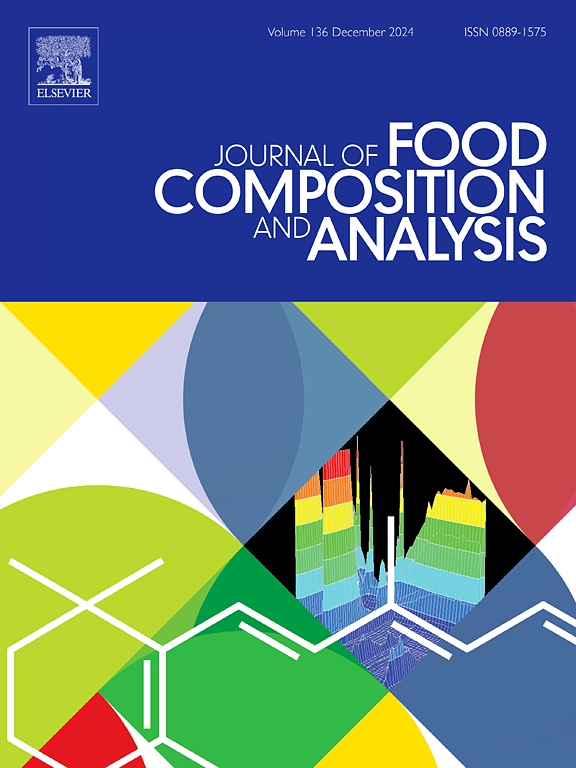Nutritional quality, volatile organic compounds and element compositions of indigenous upland rice
IF 4
2区 农林科学
Q2 CHEMISTRY, APPLIED
引用次数: 0
Abstract
Rice (Oryza sativum L.) is important staple food to ensure food security for many people specially in Asia. This study aimed to investigate grain nutrition, proximate composition, and organic volatile compounds (VOCs) and mineral contents of rice varieties. Significant differences in the content of nutritional compositions and VOCs were observed. Thirty-eight VOCs were the main aroma contributors. Principal Component Analysis (PCA) of VOCs explained 55.2 % of the total variation, which could effectively separate volatile compounds. The variable influence on projections (VIPs) in the Partial Least-Squares Discriminant Analysis (PLS-DA) model identified 2-hexanol, (Z-Z)-3,6-nonadienal and (Z)-2-octenal as aroma biomarkers. The detection limit of 10 selected element ranged between 0.00039 – 0.00654 µg/g, and the limit of quantification varied from 0.00179 to 0.01984 µg/g, the linear correlation coefficient was greater or equal to 0.9948 (R2 ≥ 0. 9948). In addition, Magnesium (Mg) was the predominant elements in the upland rice samples. The content of Mg ranged between 107.93 µg/g and 446.68 µg/g. The PCA on element contents represented 95.3 % of the total variation. The VIPs in the PLS-DA model identified Mg, Iron (Fe) and Calcium (Ca) as a biomarker. The variation in the characteristic VOCs and elements in rice varieties, providing a theoretical basis for identifying a significant VOCs and elements in rice variety.
求助全文
约1分钟内获得全文
求助全文
来源期刊

Journal of Food Composition and Analysis
工程技术-食品科技
CiteScore
6.20
自引率
11.60%
发文量
601
审稿时长
53 days
期刊介绍:
The Journal of Food Composition and Analysis publishes manuscripts on scientific aspects of data on the chemical composition of human foods, with particular emphasis on actual data on composition of foods; analytical methods; studies on the manipulation, storage, distribution and use of food composition data; and studies on the statistics, use and distribution of such data and data systems. The Journal''s basis is nutrient composition, with increasing emphasis on bioactive non-nutrient and anti-nutrient components. Papers must provide sufficient description of the food samples, analytical methods, quality control procedures and statistical treatments of the data to permit the end users of the food composition data to evaluate the appropriateness of such data in their projects.
The Journal does not publish papers on: microbiological compounds; sensory quality; aromatics/volatiles in food and wine; essential oils; organoleptic characteristics of food; physical properties; or clinical papers and pharmacology-related papers.
 求助内容:
求助内容: 应助结果提醒方式:
应助结果提醒方式:


